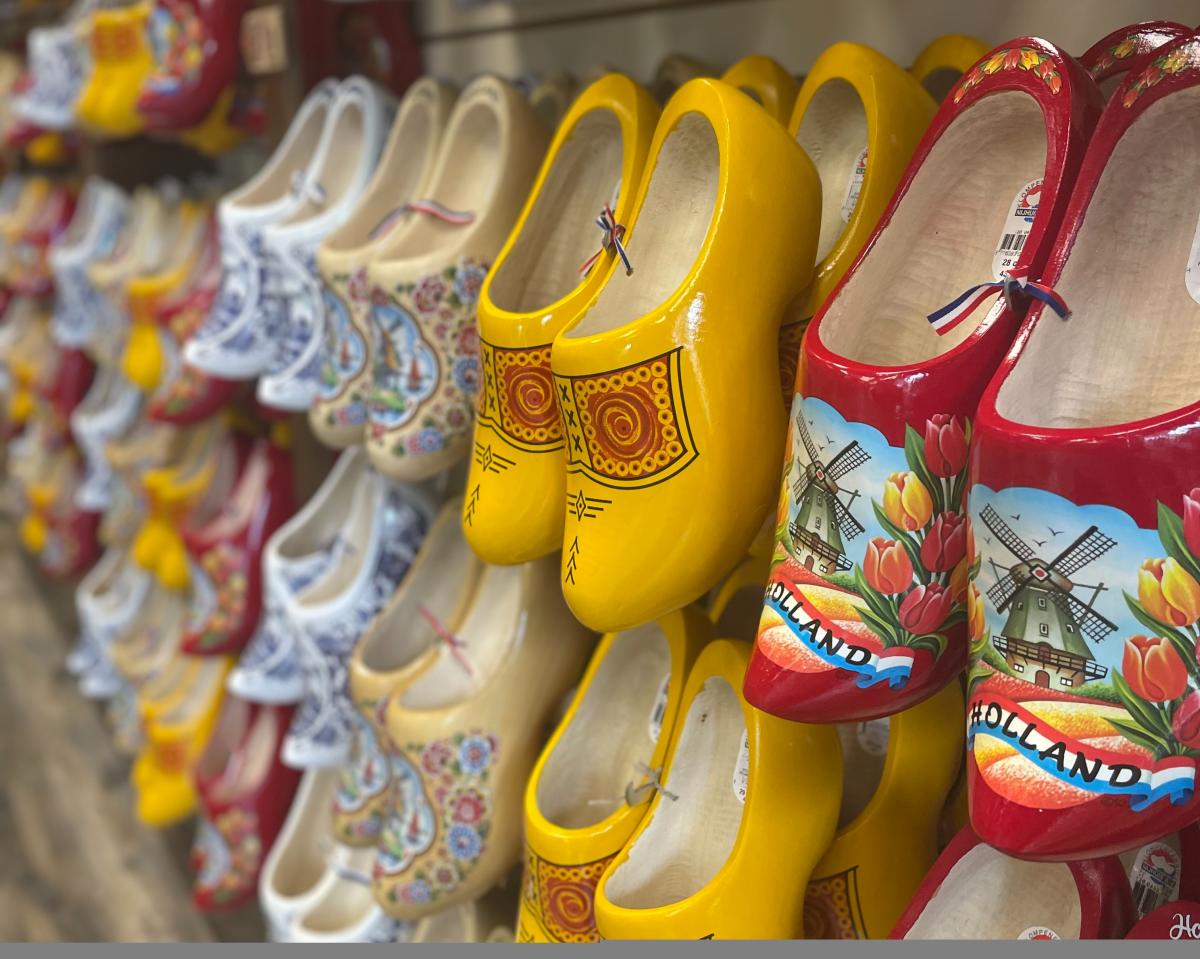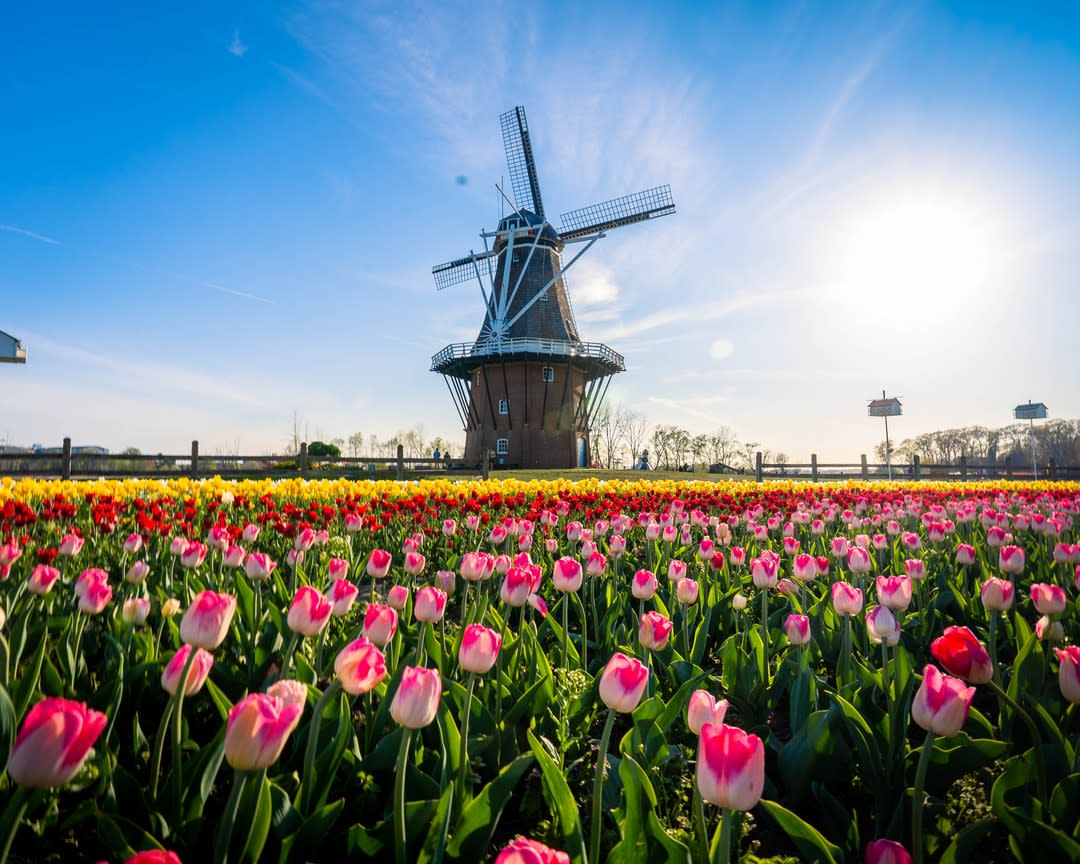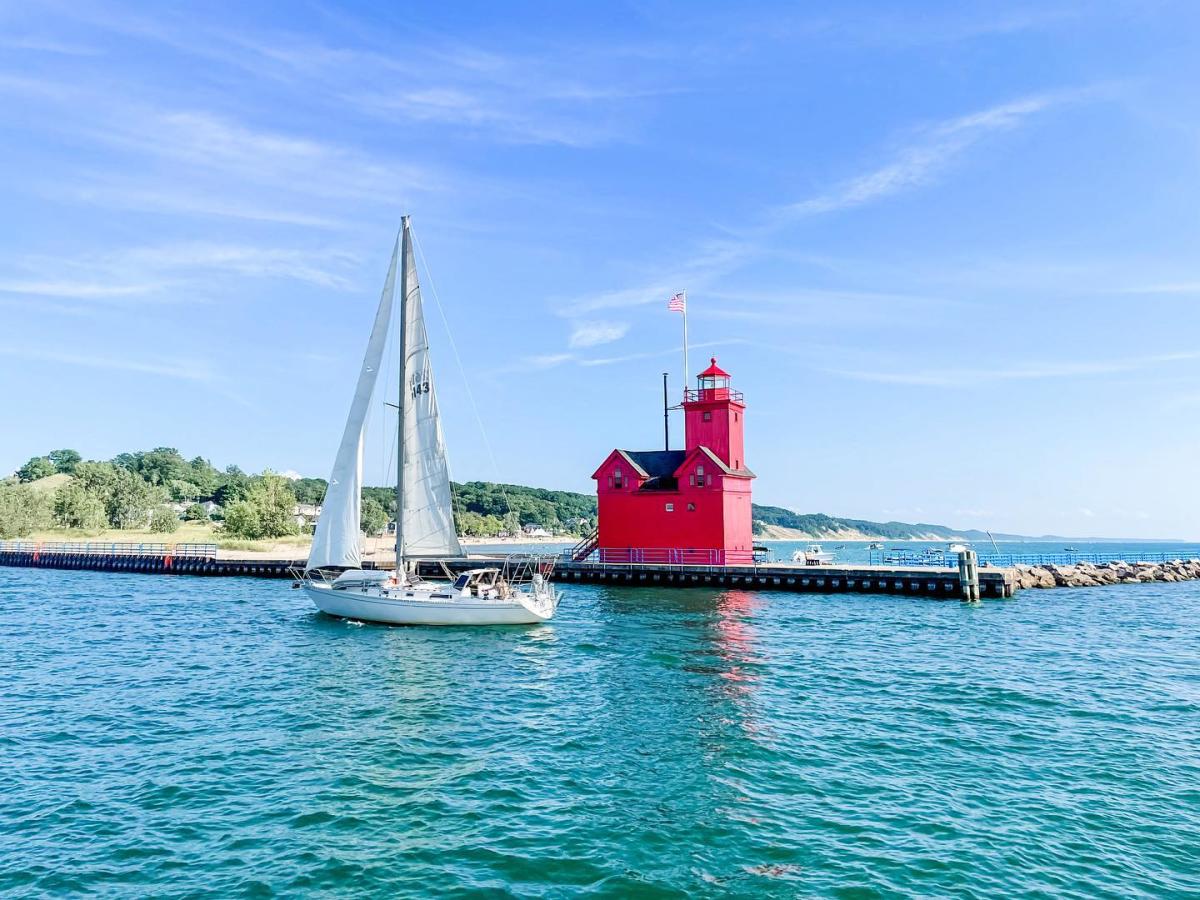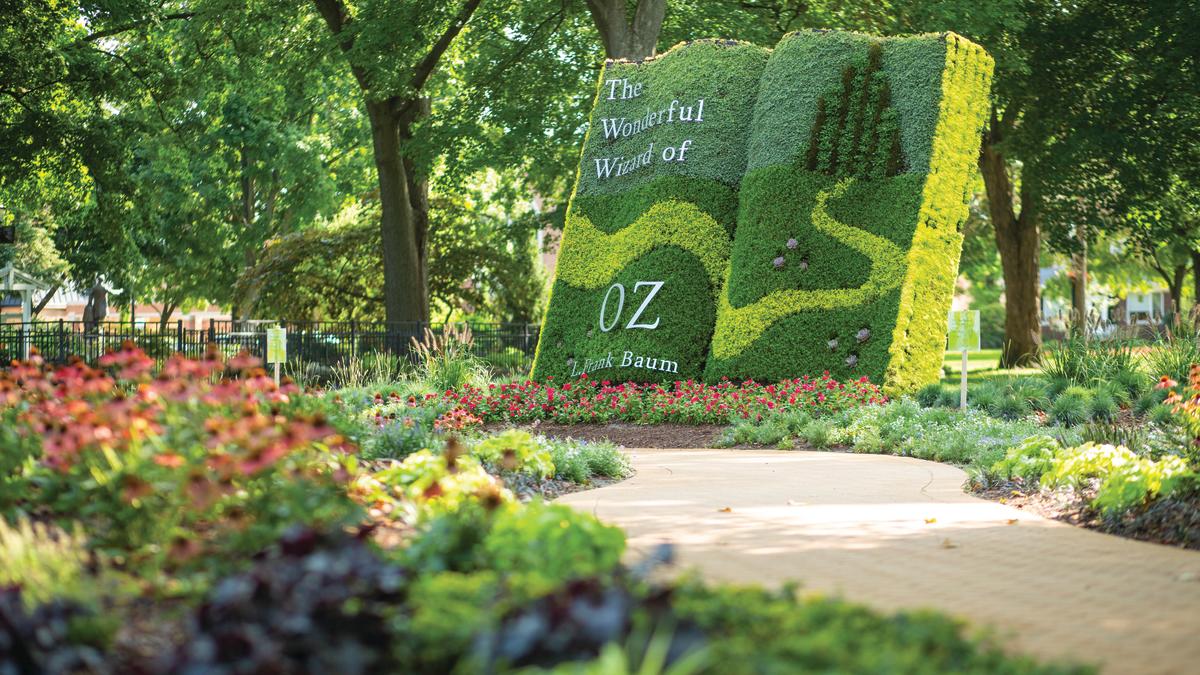Meet Linda Kaiser. Linda is the heart and brains behind Holland Tasting Tours as well as a dedicated tour guide for the Tulip Time Festival. She has an unwavering passion for showcasing the rich cultural tapestry and culinary delights of Holland, Michigan. Through her efforts, she not only crafts remarkable experiences but also fosters a profound appreciation for the treasures nestled within the heart of Holland. With boundless enthusiasm and genuine warmth, Linda Kaiser continues to leave an indelible mark on both locals and visitors alike, ensuring that Holland remains a desirable destination for all who have the pleasure of experiencing its charm. Is there something about Holland you've always wondered? Where can I buy wooden clogs? How did the Tulip Time Festival begin? Dive in and learn from the expert!
Do people speak Dutch in Holland, MI?
Very few people in Holland, MI speak Dutch anymore.
Where can I eat Dutch food?
Pigs in the Blanket or Pea Soup at Russ’
Stamppot or Bitterballen at Big Lake Brewing
Krakelingen or Banket or Boterkoek at DeBoer Bakery
Where are all the bikes?
Although nowhere near the number of bikes in the Netherlands (more bikes than people), Holland has quite a few cyclists and really nice biking paths.
Where can I buy clogs?
 Do the Dutch wear clogs?
Do the Dutch wear clogs?
Yes, they most certainly do! Especially in the countryside. “Klompen”
What is the oldest building in Holland, MI?
With a recent annexation, the oldest building in Holland is now Old Wing Mission. Second oldest is Pillar Church.
Why did the Dutch settle in Holland?
This is a multi-faceted question. When Albertus VanRaalte, Holland’s founder, left the Netherlands in September of 1846, he planned to settle in Wisconsin. During the voyage, the group unexpectedly spent the winter in Detroit. VanRaalte planned a scouting trip to explore the options. This trip was supposed to be a grand tour of the Midwest. However, after visiting the “Black River Valley” he selected this location for the settlement and ended the search. The soil was fertile, the land came with trees (a resource for lumber), there were major rivers north and south of here (Grand River and Kalamazoo River), Lake Michigan access, there was plenty of land available at a cheap price, there were towns nearby for supplies and support, etc.
Why was Holland, MI named Holland?
Holland is the nickname for the entire country of the Netherlands. The word actually means “wooded land” which was quite accurate of the Holland, Michigan area in the 1840s.
Is Holland, MI worth visiting?
Absolutely! Beautiful, clean, beaches, dunes, hiking, trails, biking, Lake Michigan, Big Red, DeZwaan Windmill, great restaurants, tulips, flowers, fishing, boating, parks, downtown, activities, artisan shops, boutiques, etc.
Why does Holland have Tulip Time?
Tulip Time was proposed in 1927 by the biology teacher at Holland High School, Lida Rogers. She had no Dutch heritage herself but wanted Holland to honor its Dutch heritage by planting thousands of tulips. In the fall of 1928, the city acquiesced, so the spring of 1929 was Holland’s very first Tulip Time.

When was Holland settled?
The official birthdate of Holland is February 9, 1847. That’s when the founder Albertus Van Raalte brought the first party of Dutch immigrants here to start carving a town out of the wilderness that was here.
Do people in Holland wear Dutch style clothing? (what we call costumes.)
Not so much. Like here, there are festivals honoring Dutch history and traditional clothing is sometimes worn then.
Why do you have a windmill? Name, age, etc?
In the 1960s, Holland decided to honor its Dutch heritage by purchasing an authentic windmill from the Netherlands. Its name is DeZwaan, which means the swan in Dutch. Its history has been debated, but it was likely built in the early 1700s.
What is Hope College?
Hope College is a small, liberal arts college taught from a Christian worldview. It offers a very high-quality education with a focus on hands-on learning. There are about 3,200 students on campus. The college was chartered in 1866, just 19 years after the founding of Holland. Hope Forward, an initiative by college president Matt Scogin, is an effort to provide pre-paid tuition for (eventually) all Hope College students.
Tell me more about...
Heated streets and sidewalks?
Holland’s snowmelt system is remarkable! Holland has an average annual snowfall of over 75 inches, but snowmelt keeps the ice and snow away from downtown Holland without salting, shoveling or plowing! We are a four-season destination.
Holland Energy Park?
The Holland Energy Park was commissioned in 2016 and replaced a coal-fired energy plant that serviced our city for 78 years. It is a beautiful example of modern architecture and the building resembles a ship. The land surrounding the combined-cycle energy plant is a city park with a ¾ mile paved trail for recreation, a pond, a fountain and a viewing platform for the windmill. It is a community asset in so many ways!
Amtrak?
The Padnos Transportation Center features the Holland, Michigan stop on the Pere Marquette Line of the Amtrak system. The train leaves early in the morning for Chicago and has a return trip back from Chicago late in the evening nearly every day.
Big Red?
Big Red Lighthouse is a gorgeous feature of the Holland shoreline. Its earliest iteration was erected in 1870, but it wasn’t red until the 1950s when maritime regulations insisted that structures on the RIGHT when RETURNING to harbor had to be RED.

Lake Macatawa?
Known as Black Lake until 1935, this seven-mile long flooded riverbed is an important part of Holland. Once the channel was dug to connect Lake Macatawa to Lake Michigan, the land here more than tripled in value. This waterway allowed transport of goods and guests that boosted the local economy significantly in the early days of Holland’s history. In the middle of the 20th century, it was known for water skiing and even hosted the national championships in the sport.
Lake Michigan?
Lake Michigan is essentially an unsalted inland sea. Few people can fathom the size of this lake. Typically it takes 4 hours to cross this lake, and for about 2.5 hours of that transit, you cannot see land. This freshwater resource is absolutely invaluable.
Oz Sculpture Garden? Frank Baum?
L. Frank Baum, the author of The Wonderful Wizard of Oz, was one of the many Chicago residents during the late 1800s that spent their summers in the Holland area enjoying the cool lake breezes. He wrote a significant portion of the book at his cottage in the Macatawa area called The Sign of the Goose. Holland embraces our Wizard of Oz connection in the Oz Sculpture Garden on the north side of Herrick District Library.
